In all the books dedicated to the Armenian art history, it is impossible to find a mention of the wall
paintings of the Armenian Church in Famagusta - Cyprus.
Our gratitude to Gohar Grigoryan for sending this essay to the www.ArmenianArt.org
THE FRESCOES OF THE ARMENIAN CHURCH IN FAMAGUSTA
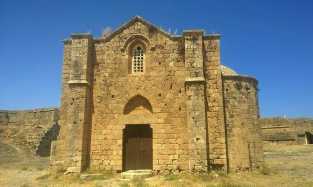 The Surb Astuacacin (Holy Mother of God) Church of Famagusta is located in the north-western part of the medieval walled town, in the so-called Syrian Quarter. It was most probably built by the Armenians who moved in from the Armenian Kingdom of Cilicia into Cyprus. The close trade ties between two port cities of Ayas and Famagusta had contributed to the formation of a prosperous Armenian community in the Cypriot town, where many national and religious minorities yearned to have their own churches as visual expression
The Surb Astuacacin (Holy Mother of God) Church of Famagusta is located in the north-western part of the medieval walled town, in the so-called Syrian Quarter. It was most probably built by the Armenians who moved in from the Armenian Kingdom of Cilicia into Cyprus. The close trade ties between two port cities of Ayas and Famagusta had contributed to the formation of a prosperous Armenian community in the Cypriot town, where many national and religious minorities yearned to have their own churches as visual expression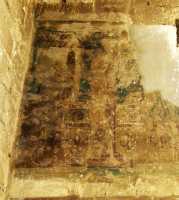 of identities. The interior of the church was probably decorated in the course of the 14th century, when the number of Famagustan Armenians continued to grow, as a result of the exodus of Armenians after the Mamluk invasions of the Armenian Kingdom.
of identities. The interior of the church was probably decorated in the course of the 14th century, when the number of Famagustan Armenians continued to grow, as a result of the exodus of Armenians after the Mamluk invasions of the Armenian Kingdom.
The researchers have often called the Armenian Church a “small and elegant” structure. In its ground plan it is a single-nave church with an apse. The interior was once extensively decorated with frescoes, which were restored lately, after being covered for decades. The frescoes at the semi-dome of the apse are almost completely vanished, except for the depiction of a female figure. Judging by her clothing and position, she was probably one of the donors of the church (the paintings?). She is shown in kneeling position in front of a saint, probably Theotokos, whose name this church bears. Although depicting the benefactor in that part of the church is uncommon in Armenian art, it is not surprising in context of the highly interrelated nature of Famagustan art.
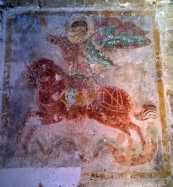 On the upper and lower parts of the northern wall, the frescoes display scenes from Christ’s life. On the lower part, the narrative cycle begins with the Nativity, the Annunciation and the Baptism, and continues at the top with the scenes of the Flagellation, the Carrying of the Cross, the Crucifixion, the Deposition and the Entombment. On the same northern wall, a framed scene of Akra Tapeinosis decorates the upper part of the arched niche, which has served as ǝncayaran (table of gifts).
On the upper and lower parts of the northern wall, the frescoes display scenes from Christ’s life. On the lower part, the narrative cycle begins with the Nativity, the Annunciation and the Baptism, and continues at the top with the scenes of the Flagellation, the Carrying of the Cross, the Crucifixion, the Deposition and the Entombment. On the same northern wall, a framed scene of Akra Tapeinosis decorates the upper part of the arched niche, which has served as ǝncayaran (table of gifts).
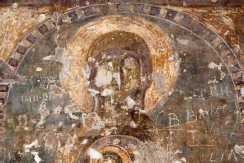 On the left side of the western wall a military saint is depicted, who most probably is Saint Theodore. This is also confirmed by the inscription, of which at least the first letter is easily discernible (ԹՈ / t‛o). On the same wall, to the right of the main entrance, two female saints are depicted: Saint Helena and Saint Paraskeve. Next to the latter is an Armenian inscription: “ՍՈՒՐԲ [ՈՒՐ]ԲԱԹ” (Holy Friday). On the southern wall, the standing figure of St. John the Baptist is depicted surrounded by sixteen small scenes and decorated with a frame with floral motifs and coat of arms. On the same wall, there is the Dormition of the Virgin. According to the description of Camille Enlart, on the southern wall used to be a depiction of the Christ Pantokrator as well, of which only a small fragment remains.
On the left side of the western wall a military saint is depicted, who most probably is Saint Theodore. This is also confirmed by the inscription, of which at least the first letter is easily discernible (ԹՈ / t‛o). On the same wall, to the right of the main entrance, two female saints are depicted: Saint Helena and Saint Paraskeve. Next to the latter is an Armenian inscription: “ՍՈՒՐԲ [ՈՒՐ]ԲԱԹ” (Holy Friday). On the southern wall, the standing figure of St. John the Baptist is depicted surrounded by sixteen small scenes and decorated with a frame with floral motifs and coat of arms. On the same wall, there is the Dormition of the Virgin. According to the description of Camille Enlart, on the southern wall used to be a depiction of the Christ Pantokrator as well, of which only a small fragment remains.
Gohar Grigoryan
08/06/2016, Fribourg
Photos by Thomas Kaffenberger, Michele Bacci and Gohar Grigoryan
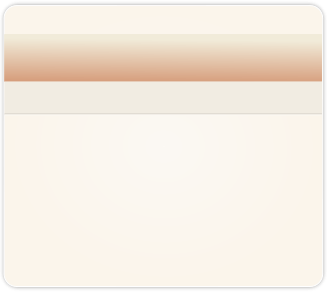















 of identities. The interior of the church was probably decorated in the course of the 14th century, when the number of Famagustan Armenians continued to grow, as a result of the exodus of Armenians after the Mamluk invasions of the Armenian Kingdom.
of identities. The interior of the church was probably decorated in the course of the 14th century, when the number of Famagustan Armenians continued to grow, as a result of the exodus of Armenians after the Mamluk invasions of the Armenian Kingdom.
